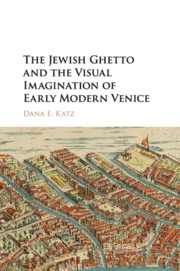Book contents
- The Jewish Ghetto and the Visual Imagination of Early Modern Venice
- The Jewish Ghetto and the Visual Imagination of Early Modern Venice
- Copyright page
- Dedication
- Contents
- Illustrations
- Acknowledgments
- Introduction
- 1 Margins as Laboratories of Urban Planning
- 2 Enclosures as Topographies of Vision
- 3 Windows as Sites of Visual Disturbance
- 4 Walls as Boundaries of the Night
- Conclusion
- Notes
- Bibliography
- Index
- References
Bibliography
Published online by Cambridge University Press: 30 August 2017
- The Jewish Ghetto and the Visual Imagination of Early Modern Venice
- The Jewish Ghetto and the Visual Imagination of Early Modern Venice
- Copyright page
- Dedication
- Contents
- Illustrations
- Acknowledgments
- Introduction
- 1 Margins as Laboratories of Urban Planning
- 2 Enclosures as Topographies of Vision
- 3 Windows as Sites of Visual Disturbance
- 4 Walls as Boundaries of the Night
- Conclusion
- Notes
- Bibliography
- Index
- References
- Type
- Chapter
- Information
- Publisher: Cambridge University PressPrint publication year: 2017

